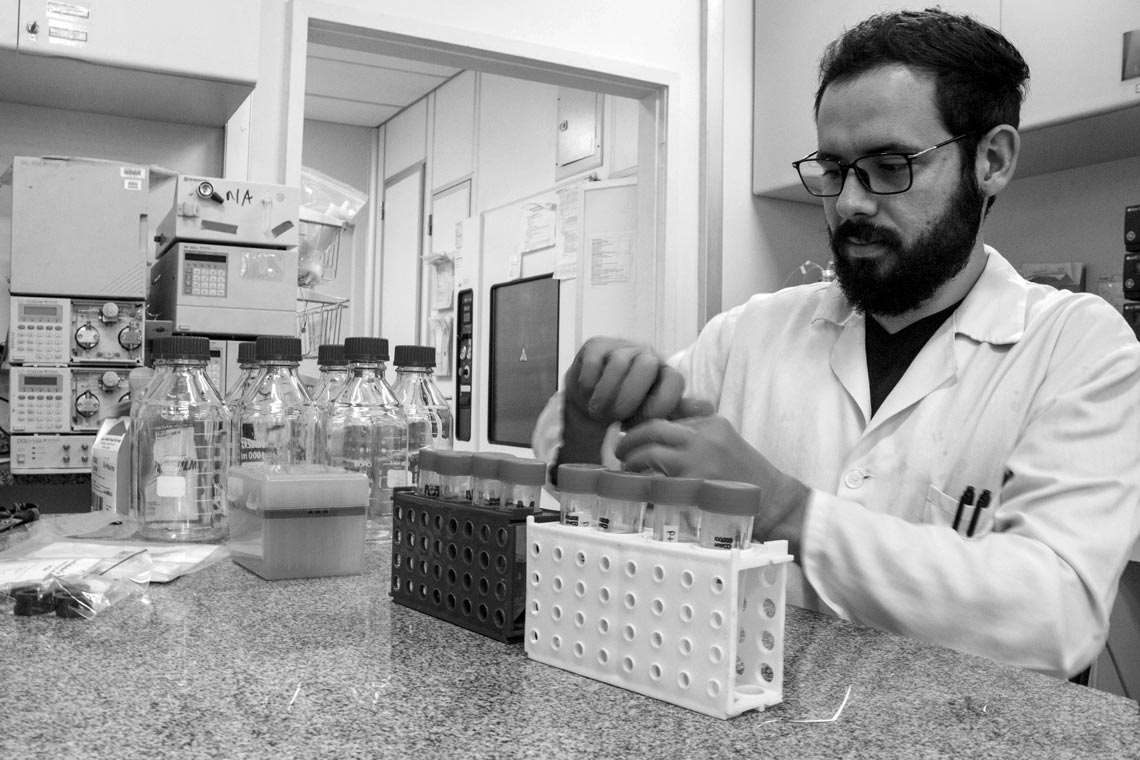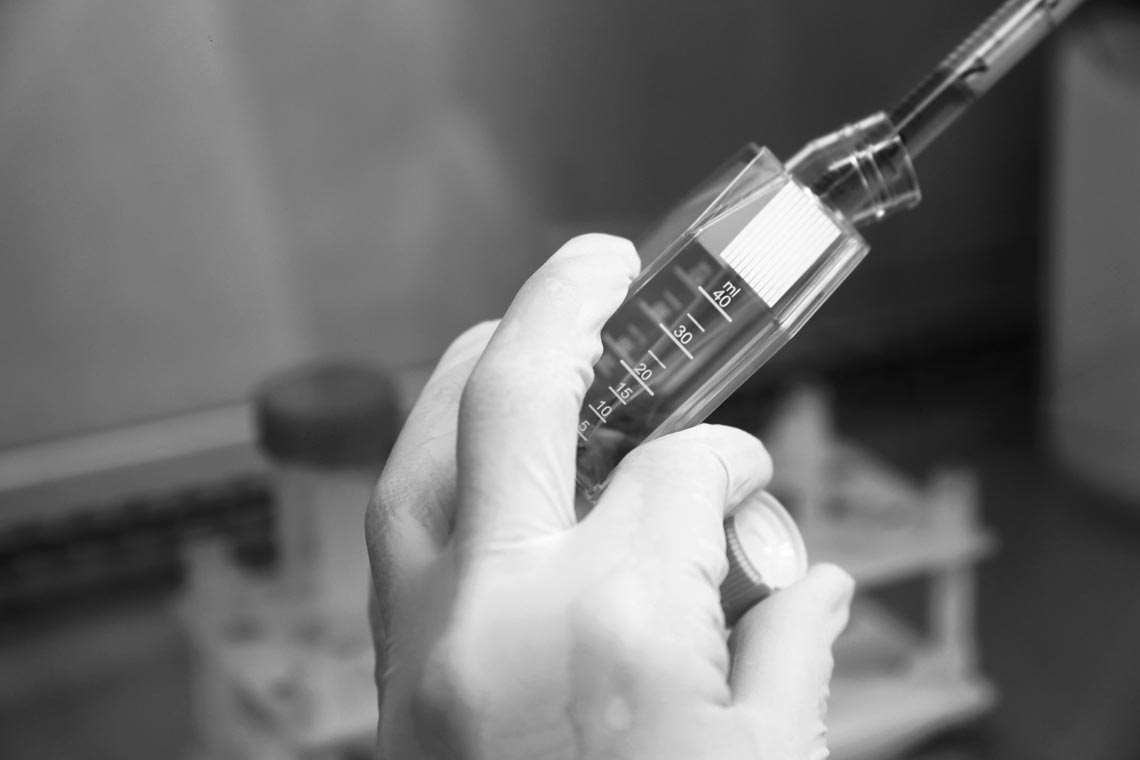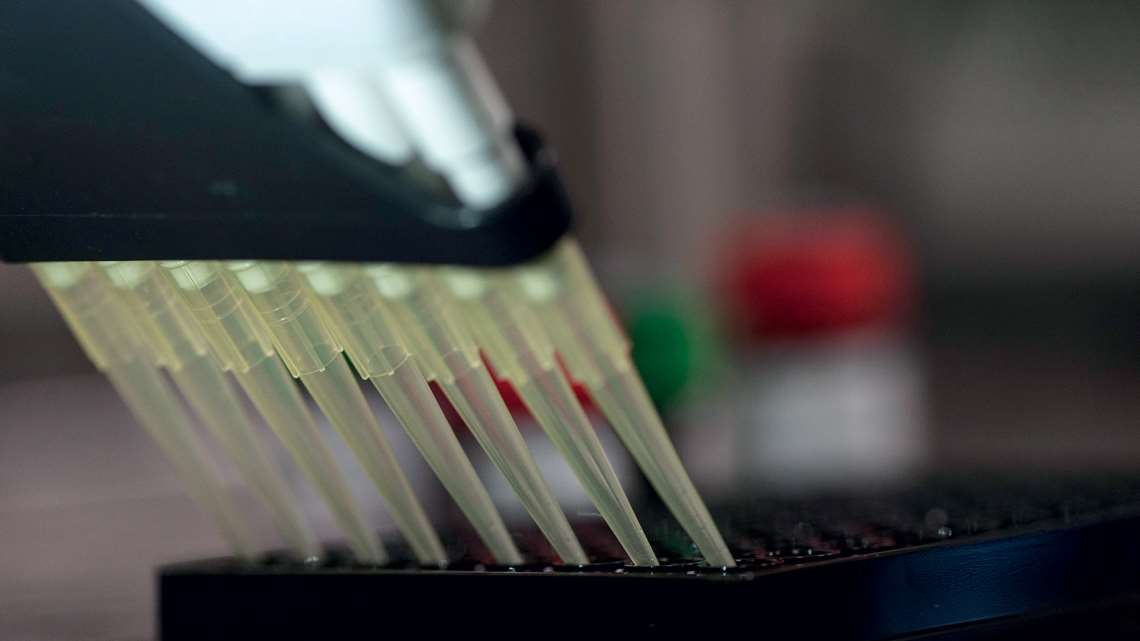Brazilian science is committed to producing its own COVID-19 vaccine, but there are enormous obstacles to achieving this goal, and they are not only related to funding. There are about 15 vaccines currently under development in the country, at least four of which are expected to begin human trials in the coming months. A common feature of these projects, which still lack funding and need to overcome a number of technical and production challenges if they are to be successful, is that most include technological solutions for dealing with constant mutations of the virus.
The most advanced Brazilian candidate is being developed by the Ribeirão Preto School of Medicine (FMRP) at the University of São Paulo (USP), in partnership with São Paulo–based biotechnology startup Farmacore and American laboratory PDS Biotechnology. In mid-February, the group asked the Brazilian Health Regulatory Agency (ANVISA) for authorization to start clinical trials of its vaccine, known as Versamune-CoV-2FC. Three other projects are also advancing at the Heart Institute (InCor) of USP’s School of Medicine (FM) in São Paulo; the Federal University of Minas Gerais (UFMG), Oswaldo Cruz Foundation (FIOCRUZ), FMRP-USP, and the Butantan Institute; and the Federal University of Rio de Janeiro (UFRJ).
– Combat strategy
– Breathless emerging economies
– The expected effect of vaccines
– Eurico Arruda: Admirer of viruses
All 15 projects are in the preclinical phase, when promising compounds are tested on cell cultures and animals, a step that does not require high investment or complex infrastructure. The path to approval for public use is long, and most vaccine candidates fall by the wayside.
Clinical trials, which are needed to prove the safety and efficacy of a vaccine, can only be started if positive results are achieved in preclinical tests, and require substantial funding. Scientists told Pesquisa FAPESP that investments of some R$300–400 million are needed for any given vaccine candidate. Of this amount, R$30 million is used for phase 1 and 2 clinical trials, when the vaccines are tested on small groups of people. Phase 3 trials, during which a vaccine candidate is administered to thousands of volunteers, cost an estimated R$300–350 million.
The Brazilian Ministry of Science, Technology, and Innovation (MCTI) requested a special loan of R$400 million from the Ministry of the Economy for this purpose. “The MCTI’s efforts to raise funds are well-known, but so far we have been guaranteed nothing,” says immunologist Ricardo Tostes Gazzinelli, head of the National Institute of Vaccine Science and Technology (INCTV) and UFMG’s Vaccine Technology Center. If federal funds are released, there would be enough money to conduct phase 1 and 2 clinical trials for two or three candidates and phase 3 clinical trials for just one.

COPPE-UFRJ
A scientist works on production of the S protein used in UFRJ’s recombinant vaccineCOPPE-UFRJMost Brazilian COVID-19 vaccines are funded by the MCTI. Pesquisa FAPESP contacted the ministry requesting a list of the projects it is funding, the amount it has invested so far, and whether the additional R$400 million is expected to be provided, but no response had been received at the time of printing.
The lack of funding is just one of many obstacles to the development of a Brazilian vaccine. There are others that are equally or even more significant, such as the absence of specialist immunobiological centers and manufacturing units capable of transforming scientific research into final products, as well as the country’s limited experience producing a complete vaccine from initial laboratory studies to large-scale production. The drug and vaccine supply chain in Brazil is unreliable, with only a small number of pharmacochemical companies—which are essential for producing active pharmaceutical ingredients (APIs), the main input for vaccines—and laboratories that specialize in testing on animals (see report).
“We have very limited infrastructure capable of producing pilot batches with good manufacturing practices, conducting preclinical safety tests, and generating cell banks for industrial production. All of this is done abroad and costs at least R$10 million per vaccine,” points out Gazzinelli. “Another bottleneck, in my view, is the low interest pharmaceutical companies have in advanced human vaccine projects. Phase 3 clinical trials are very expensive and our human immunization industry is fully subsidized by the federal government. The pharmaceutical industry doesn’t have the resources to invest in this type of project, which can be very profitable if successful, but presents a significant risk of failure.”
Some programs seek out private funding in order to continue development and begin phase 1 and 2 clinical trials. This was the strategy adopted by the Cell Culture Engineering Laboratory (LECC) of the Alberto Luiz Coimbra Institute for Graduate Studies and Research Engineering (COPPE) at UFRJ, which obtained R$2 million from Fast Grants, an American charity that funds scientific research aimed at combating COVID-19 worldwide. LECC is also looking to forge partnerships with Brazilian pharmaceutical companies for development and production.
The lab’s vaccine uses recombinant DNA technology, in which the active ingredient is a protein obtained by genetic engineering. Biochemical engineer Leda Castilho, head of the initiative, says that LECC is already producing the SARS-CoV-2 spike protein on a pilot scale, culturing mammalian cells in bioreactors. The final formulation of the vaccine, currently at the prototype stage, contains the recombinant protein and an adjuvant to trigger the body’s immune response.

Farmacore-FMRP-USP
Cells being cultured by Farmacore, a partner of FMRP-USPFarmacore-FMRP-USP“The recipient is given the same protein that the virus contains, to stimulate their immune system to produce antibodies. We give people the actual protein, while vaccines based on mRNA [messenger ribonucleic acid] or viral vectors are designed to stimulate the body to produce the S protein itself, and thus trigger the immune system,” she explains.
Considered safe, recombinant vaccines are already used against hepatitis B, influenza, and HPV, the human papillomavirus. According to LECC’s ideal schedule, its preclinical tests on animals will be concluded in the first half of this year. If successful, human trials will then be started afterwards, once funding is secured. If everything goes as planned, the vaccine would ready to begin industrial production in mid-2022. “There are already factories in Brazil producing recombinant proteins. They could be adapted to manufacture COVID-19 vaccines without the need for major investment in new dedicated industrial plants,” says the COPPE scientist.
This is an important point for the viability of domestic production. Immunologists like Gazzinelli highlight two uncertainties in the battle against COVID-19. The first is that not enough information has yet been gathered about the novel coronavirus’s evolution cycle, especially regarding its capacity to mutate and how this might affect transmission and fatality rates. The second is that nobody knows how long the protection provided by the vaccines will last. The prevailing theory is that the virus will constantly mutate, surviving among us for a long time. We may therefore require annual vaccinations.
It is possible, however, that the virus will not prove so resilient, and the disease will end up being eliminated more quickly. Faced with an unpredictable future, it is more difficult to encourage major investments in new vaccine manufacturing plants that even in the most optimistic of scenarios, would only start operating in 2022. A vaccine that takes advantage of existing industrial infrastructure, as is the case with recombinant vaccines, could help solve this problem. A company with the necessary know-how could restructure its production, create extra shifts at nights or weekends, and hire more staff to work on producing COVID-19 vaccines.
In Ribeirão Preto, in the interior of São Paulo, the FMRP-USP, Farmacore, and PDS Biotechnology project expects to commence human testing in May. “The batch for phase 1 and 2 clinical trials is already being produced,” says immunologist Celio Lopes Silva, from the Department of Biochemistry and Immunology at FMRP-USP.

Léo Ramos Chaves
InCor’s vaccine candidate being tested on mice during preclinical trialsLéo Ramos ChavesThe candidate is another recombinant vaccine. It uses the S1 protein from SARS-CoV-2 combined with the Versamune carrier and immunomodulator, developed by PDS. The substance activates the B and T lymphocytes, which play an important immunological role in viral infections and innate immunity. “It is an innovative solution that induces the production of neutralizing antibodies and at the same time stimulates a strong immune response, activating the entire cellular defense system, including the generation of type I interferons [IFN-I],” highlights Silva. Interferons are glycoproteins that provide antiviral protection. The researcher hopes that this combination—the production of antibodies against the spike protein and the activation of B and T lymphocytes and innate immunity—will be capable of coping with mutations in the virus.
The initiative received a R$3.8 million grant from the MCTI for the preclinical phase, and it hopes to be among those considered by the ministry should it clear funding for clinical trials. Silva states that they are in advanced negotiations to transfer the technology to a company based in Brazil.
Another candidate close to the clinical trials stage is being developed by the InCor Immunology Laboratory. According to immunologist and research coordinator Jorge Kalil, the team is currently defining the vaccine prototype by testing on mice. Two potential vectors are being analyzed for the antigen. One uses an artificial protein with targets for B and T lymphocytes synthesized in the laboratory in conductive nanoparticles; the other uses virus-like particles (VLPs). In this case, important parts of the virus are used to trigger a response from the immune system, but without the genetic material.
The aim is for the vaccine to be applied by a nasal or oral spray. “We want to strengthen the immune system of the mucous membrane lining the respiratory tract, a region where contagion occurs,” says Kalil. The immunologist expects the proofs of concept from animal tests to be completed by June. If the results are positive, human trials could take place in the second half of the year. The project received R$10.5 million from the Brazilian National Council for Scientific and Technological Development (CNPq) and R$328,000 from FAPESP. The two agencies also invested more than R$7 million in the Brazilian National Institute of Science and Technology for Research in Immunology (INCT-LII), headed by Kalil, whose goal is to develop new vaccines. Of the total invested by FAPESP, just over R$1 million has already been disbursed, and the rest will be released over the course of the project, scheduled to end in 2023.
The UFMG Vaccine Technology Center is working simultaneously on two candidates, developed within the scope of the National Institute for Vaccine Science and Technology (INCTV), with R$3.7 million in funding from the MCTI. One of them, being developed in conjunction with FIOCRUZ and FMRP-USP, is a recombinant vaccine that uses SARS-CoV-2’s spike protein and its N protein (the nucleocapsid). “The spike protein is expressed on the viral surface and is the target of antibodies, and the N protein, expressed in greater quantity inside infected cells, is an important target for T lymphocytes,” says Gazzinelli. The genes that encode segments of the two proteins have been fused to create a recombinant chimeric protein, which is injected with adjuvants.
The second compound, developed in partnership with FIOCRUZ and the Butantan Institute, is also funded by FAPESP. It is a recombinant Flu-CoV vaccine, which uses a genetically modified version of the H1N1 influenza virus. The antigen is produced by combining the S protein of the novel coronavirus with hemagglutinin from seasonal influenza. “Hemagglutinin stimulates the virus to enter the cell and neuraminidase [an enzyme used in the formulation] allows it to leave the cell. We removed the gene that codes the neuraminidase, and in its place, we inserted another that codes the S protein. The virus thus enters a host cell and expresses its proteins, but does not leave. This induces an immune response, without allowing the virus to replicate,” explains Gazzinelli. The idea is to administer the vaccine using an aerosol spray. One advantage is that it could be used as a hybrid vaccine for both COVID-19 and influenza.
Immunogenicity tests of the two vaccines, currently in the final proof of concept stage, indicated a strong cellular and humoral immune response against the SARS-CoV-2 proteins. If all continues as planned, clinical trials will start until May. The expectation is to have a vaccine ready by 2022. “This pandemic is not going away anytime soon. It is important that Brazilian technology is capable of responding quickly to mutations in the virus that occur in Brazil and elsewhere in the world,” says Gazzinelli.
Projects
1. Mapping epitopes of the SARS-CoV-2 virus for T lymphocytes and the spike protein receptor for B lymphocytes (no. 20/05256-7); Grant Mechanism Regular Research Grant; Principal Investigator Jorge Elias Kalil Filho (USP); Investment R$328,435.51
2. Bivalent intranasal vaccine using influenza virus expressing the SARS-CoV-2 S (spike) protein: Protection mechanisms and lung injury (no. 20/05527-0); Grant Mechanism Regular Research Grant; Principal Investigator Ricardo Tostes Gazzinelli; Investment R$182,189.86.
3. INCT 2014: Immunology investigation (no. 14/50890-5); Grant Mechanism Thematic Project; CNPq-INCT Agreement; Principal Investigator Jorge Elias Kalil Filho (USP); Investment R$3,996,152.01.
